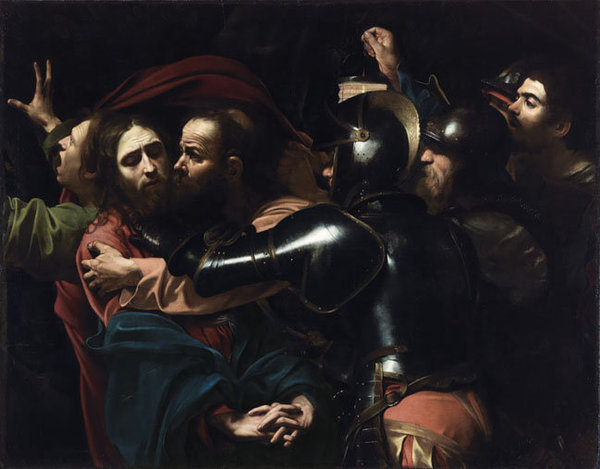Michelangelo Merisi da Caravaggio (1571-1610)
“The Taking of Christ”
1602, Rome
oil on canvas
133.5 x 169.5 cm.
National Gallery of Ireland
(c) Public domain
Caravaggio’s “The Taking of Christ” – also known as “The Betrayal” – is one of the artist’s most dramatic and compelling scenes, with figures painted in three-quarter length, forced so close to the picture plane that his viewers must have felt their presence. Seven men are included in the painting. To the left, a beardless youth in red and green flees the scene with arms raised as his robe flows in an arch over the heads of Christ and Judas. Christ somberly learns towards the right and gazes down, hands extended in front, still clasped in prayer. Continuing towards the right, Judas and an armored soldier grasp Christ’s right shoulder, their arms forming a complementing arch to the fleeing youth’s robe, framing the heads of Christ and Judas. Two other soldiers and a figure commonly identified as Caravaggio complete the right half of the painting.
“The Taking of Christ” has been a source of great allure and mystery for scholars considering the possible inclusion of a self-portrait in addition to Caravaggio’s surprising non-violent approach to the subject. Indeed, Caravaggio’s penchant for violence in his paintings is a well-documented and researched theme. Interpretations abound with respects to the supposed self-portrait, each calling attention to the artist’s metaphorical use of light and some even suggesting the painting reveals clues to Caravaggio’s faith.
Learn more about this magnificent Baroque masterpiece by visiting the National Gallery of Ireland.
Fine Art Today is a weekly e-newsletter from Fine Art Connoisseur magazine. To start receiving Fine Art Today for free, click here.







